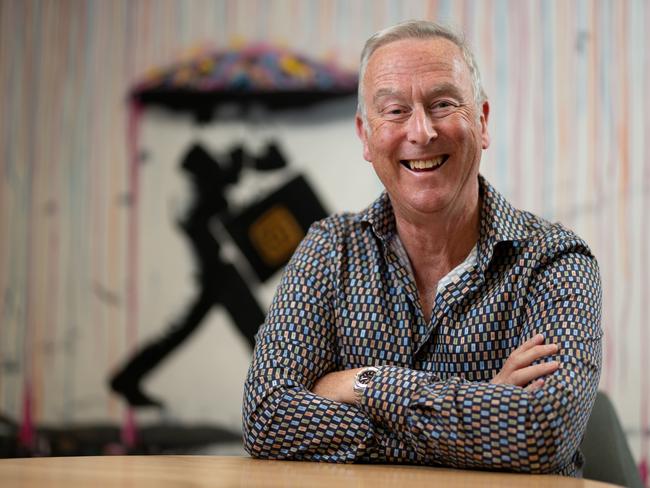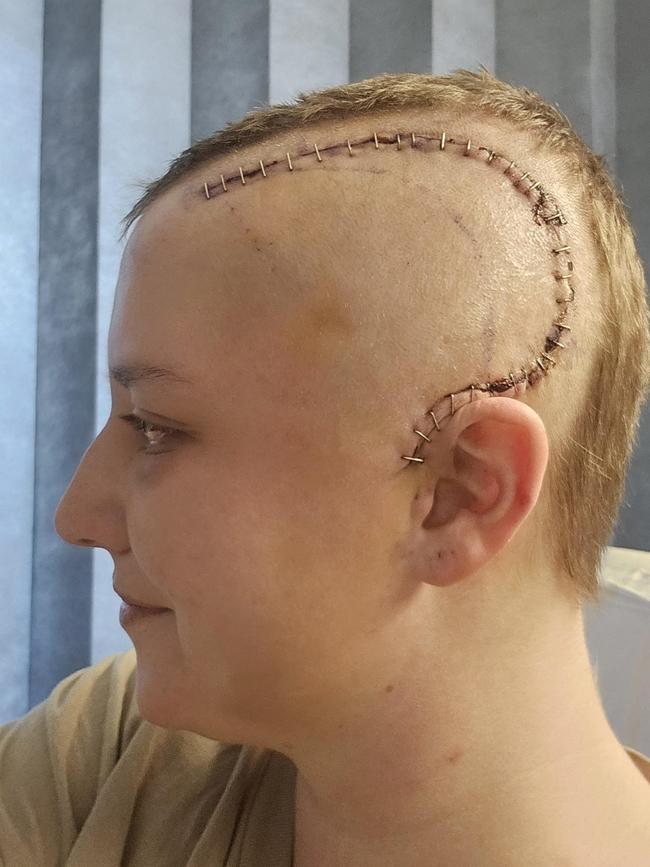Adelaide doctor’s brain-bending anaesthetic-free surgery has changed my mind | Jess Adamson
Some dismiss it as unscientific mysticism but the patients who tried this brain-bending technique say it’s a gamechanger.
SA News
Don't miss out on the headlines from SA News. Followed categories will be added to My News.
Imagine being told you have a tumour in your brain.
Next, imagine being told you need an eight-hour operation to remove it that could permanently affect your speech, language and comprehension.
Then, imagine being told you could have that operation while wide awake, with the help of hypnosis rather than a general anaesthetic. It would be a no, from me.
At least, I thought it would be, until I got talking with Adelaide anaesthetist Dr Michael Goldblatt last week.
He’s recently coached two local patients to embrace hypnosis while undergoing craniotomies, the surgical removal of part of the bone from the skull to expose the brain.
The complex procedures, believed to be the first assisted by hypnosis in Australia, were conducted at the Flinders Medical Centre by neurosurgeon Santosh Ponoose.
And they were both enormously successful.

Dr Goldblatt says if patients are calmer and able to communicate during surgery, it’s a game changer.
“We can deeply anaesthetise a patient and resect the tumour but when they wake up, they may not be able to understand us or speak,” he says.
“When a patient is awake, they can be constantly tested so we can get as much of the tumour as we can, until it starts to impact on their language or speaking.
“A speech pathologist is in the theatre, talking to the patient, showing them pictures, getting them to do things like put groups of words together.”
27-year-old Woodcroft woman Saffron Fry was one of those patients on June 26 this year.
Saffron had a four by 4.5-centimetre cancerous tumour in her brain called oligodendroglioma, specifically grade two, sparking frightening seizures.
Dr Goldblatt worked with Saffron in the lead up to the surgery, helping her to picture positive images, places and people.
Then, he sat with her throughout the operation, gently guiding her to those images.
“During the operation, we used hypnosis to help her become very absorbed in positive imagery so anything unpleasant or uncomfortable happening in the theatre faded into the background,” he says.
And it did.


Saffron says the eight-hour procedure felt like two hours.
There was some light sedation and pain relief to help her cope with lying in one spot for eight hours, but not much.
When Saffron felt the medical team cutting her skull, she took herself somewhere else.
“It’s amazing to be able to close your eyes and really just pull away from your physical body to go into a beautiful place wherever that may be,” she says.
“For me it was the beach, and I was camping. I had my fiancé and my dog and all my group of friends that I absolutely love so much.
“I had a couple of cheeky Jim Beam cans in that vision too – Michael helped me learn that one.”
Saffron says her recovery, without a general anaesthetic, was excellent.
The other local patient, a man who had surgery under hypnosis late last year, had monitors placed on the surface of his brain.
“When the patient took himself into hypnosis there were significant changes seen in the brain wave activity,” Dr Goldblatt says.
“It showed that the excitability and irritability of the brain cortex was reduced which is a really good thing.
“When the patients are calm and they’re tolerating the procedure well, the testing becomes more reliable, providing the surgeon with the best possible conditions to do the operation.”
What a powerful tool the mind is.
And how lucky we are to have someone like Dr Michael Goldblatt, pushing the boundaries and challenging the way things have always been done.
Hypnosis has been used for pain relief since the 1840s but not like this.
22 similar operations in Europe have been “reported” in medical journals but none here, yet.
That’s coming but it will take time.
In Belgium, 20 per cent of breast surgery is conducted using only local anaesthetic and hypnosis for sedation.
It’s another option for those wanting to skip the big drugs like pregnant women, or those with allergies.
Dr Goldblatt says the intention is not for hypnosis to replace anaesthesia, but to work with it, offering some control and a sense of empowerment to the patient.
And while you might be thinking it wouldn’t work for you, he’s confident, it would.
Not surprisingly, this idea isn’t everyone’s cup of tea.
Many health professionals see the practice as mystical and non-scientific.
Just 12 years ago, Dr Michael Goldblatt was the biggest sceptic of them all.
His 13-year-old daughter was suffering from extreme anxiety and when his wife suggested they explore hypnosis, he dismissed it.
“I thought it was a total waste of time, money and effort,” he says.
“But I saw the change in her after one session, then saw a total change after 2 sessions and thought ‘I need to explore this’”.
And he did, gaining his Diploma in Hypnosis in Australia, before travelling overseas to learn from world-renowned stage hypnotists and the best therapists.
From sceptic to zealot, he’s now passionate about standardising the practice, giving more patients the opportunity to achieve a better surgical outcome.
“I love the neuroscience behind it,” Dr Goldblatt says.
“It’s real and it’s something that could help many people.
“Hypnosis is something that is normal, natural and in fact something we’re all doing hundreds if not thousands of times a day without realising it.”
The possibilities are endless.
More Coverage
Originally published as Adelaide doctor’s brain-bending anaesthetic-free surgery has changed my mind | Jess Adamson






